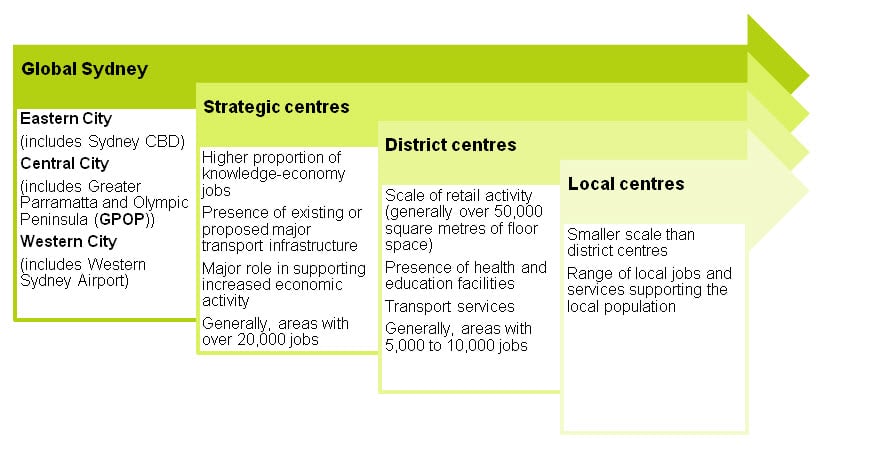Developers, infrastructure providers and other stakeholders in planning and development should review the Greater Sydney Commission's draft plans and consider making a submission before the end of March 2017.
The Greater Sydney Commission (GSC) reached a milestone as the new strategic planning body for the Greater Sydney region last month. On 21 November 2016, the GSC placed a number of key draft strategic documents for the Greater Sydney region on public exhibition, including:
- draft District Plans for each of the six districts (Central, North, West Central, West, South West and South); and
- Towards our Greater Sydney 2056, a draft amendment to update the existing Greater Sydney regional plan, A Plan for Growing Sydney (Regional Plan Update).
These documents provide the best indication so far of the Government's strategic priorities for regional planning and, therefore, the opportunities for development in greater Sydney.
Consultation of these strategic documents until the end of March 2017 will allow for public comment on the GSC's overall 20-year and 40-year vision for the Greater Sydney region prior to finalisation of the district and regional strategic plans in late 2017.
Draft District Plans
The GSC's draft District Plans are a new feature of the NSW planning system and seek to provide State and regional-level strategic direction for greater Sydney planning, with direct impact on local environmental plans (LEPs).
A number of components form the GSC's draft District Plans:

The Environmental Planning and Assessment Act 1979 (NSW) requires the GSC to address specific matters in each District Plan, including:
- areas of State, regional or district significance, including priority growth areas;
- the basis for strategic planning in the district (considering economic, social and environmental matters); and
- the planning priorities and actions for each District that are consistent with the objectives, strategies and actions specified in the regional plan, including frameworks for monitoring and reporting the implementation of such actions.
Priorities and actions
The strongest feature of the draft plans is the vision of Sydney as three "cities": the Eastern City, the Central City and the Western City.
Using this vision, the GSC has identified the key planning levels below, in terms of scale and contribution to Greater Sydney, and that economic, social and environmental factors must be considered to allow for job growth, productivity and service provision to local communities.

Each draft District Plan shares these overarching priorities:
- aligning land use and infrastructure planning through better research, decision-marking and collaboration between State and local government;
- developing a framework to monitor change and growth;
- developing an interactive online information hub (the Greater Sydney Dashboard); and
- reporting on local planning.
Key priorities and actions that the GSC will focus on for each district are divided across productivity, livability and sustainability themes. Examples of the strategic priorities adopted by GSC include:
- productivity priorities: improving 30-minute access to jobs and services, growing jobs in health and education sectors, attracting employment; and planning for job targets;
- livability priorities: improving housing choice, diversity and affordability; coordinating housing outcomes and demographic trends; fostering cohesive communities; and responding to people's need for services; and
- sustainability priorities: creating an efficient and resilient district; protecting waterways; managing coastal landscapes and flood hazards; and protecting and enhancing biodiversity.
Impact on local planning
There is no immediate impact on development that is permissible or prohibited under an LEP. However, the relevant planning authority must now consider draft District Plans when determining a planning proposal, and must give effect to them once they have been made.
Generally, the GSC states that for local government the draft District Plans will:
- inform the preparation of LEPs;
- inform planning proposals;
- guide strategic land use, transport and infrastructure planning across local government areas; and
- inform infrastructure planning.
The GSC has acknowledged that giving effect to the District Plans by local councils may require a comprehensive LEP review or staged updates that reflect the local government area priorities in each District Plan. This is consistent with the obligations of councils under the Planning Act.
A key question for the effectiveness of the District Plans is whether they are detailed and directed enough to drive real change in local and regional planning and development approvals throughout greater Sydney. We would suggest that stakeholders focus on this as one of the topics for their submissions to the GSC.
Sydney Planning Panels
On 21 November, the same day as the draft plans were released, Sydney Planning Panels also commenced and replaced the Sydney East and Sydney West Joint Regional Planning Panels.
The Central Sydney Planning Committee for the City of Sydney is not affected.
Functions of the Sydney Planning Panels include determining regionally significant development applications (DAs) within the Greater Sydney region and considering planning proposals (re-zoning requests).
The effectiveness of implementation of the new strategic plans will also be assessed on how the Sydney Planning Panels consider the District Plans when determining DAs and planning proposals. Before the District Plans commence, we expect that how the Sydney Planning Panels deal with the draft District Plans will provide proponents with some guidance as to the implementation of these plans.
Updating A Plan for Growing Sydney
The draft Regional Plan Update provides an overview of the comprehensive review of A Plan for Growing Sydney that GSC will undertake in 2017. GSC's strategic direction is based on its three main themes of Sydney as a productive, liveable and sustainable city.
The GSC states that leading global cities develop various alternatives for where key economic activity is located, distributed and how it is organised. Accordingly, GSC believes the focus on Sydney CBD cannot continue and advances a vision of Greater Sydney as a metropolis of three cities: Eastern City, Central City and Western City.
The need to update the existing regional plan is supported by the forecast of higher rates of growth since the release of the regional plan, including population projections. The GSC flags that one key issue arising from increased growth forecasts is the need to accelerate housing opportunities. Consequently, GSC notes that any revised regional plan should guide various opportunities to increase housing stock, including:
- urban renewal: investigating possible urban renewal corridor capacity for new housing in the medium term (5 to 20 years) and long term (over 20 years);
- medium density infill development: investigating opportunities for medium density housing in suburban Greater Sydney, supported by the NSW Department of Environment and Planning's Draft Medium Density Design Guide; and
- new communities in land release areas: investigating key areas in Greater Sydney's north-west, west and south-west that have the capacity for new communities.
Next steps for the draft District Plans and Regional Plan Update
The public consultation period for the draft District Plans and draft Regional Plan Update will extend until the end of March 2017. Developers, infrastructure providers and other stakeholders in planning and development should consider making a formal submission during the public exhibition period or participate in GSC community engagement activities during this time.
Following public exhibition, the GSC intends to finalise the District Plans and revised Greater Sydney regional plan at the end of 2017.
In 2017, the way in which the Sydney Planning Panels consider draft District Plans will provide some guidance as to how the strategic plans are to be enforced. Upon commencement of the District Plans, the responsiveness of local councils to give effect to the strategic plans in LEPs will be a key indicator of the adoption of GSC's vision for Greater Sydney.
RELATED KNOWLEDGE
Clayton Utz communications are intended to provide commentary and general information. They should not be relied upon as legal advice. Formal legal advice should be sought in particular transactions or on matters of interest arising from this bulletin. Persons listed may not be admitted in all states and territories.

